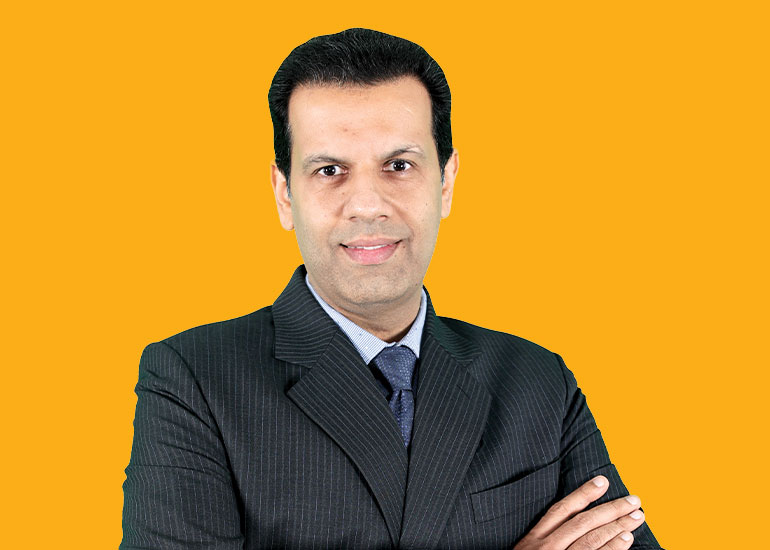Q] The overall communication tone of Max Life Insurance has always been positive rather than setting the consumer in the context of fear. What is the reason for this approach?
The larger life insurance narrative that has been prevailing for the last five to 10 odd years has been a balance between the so-called fear of uncertainty that also got heightened by the pandemic and being positive, trying to show the protagonist in a positive light. Max Life Insurance has chosen to be on the right side of that spectrum. We know that there are uncertainties in life, which we can’t control. But as a brand we try to be progressive, propagating mindful thinking because financial planning is more meaningful when done proactively.
We have always chosen to celebrate the breadwinner because we realise that in today’s environment, consumers at large are millennials or Gen-Z who are entering the category and want to be a part of this conversation.
Q] What has been the insight on the long-term proposition of ‘India Ke Bharose Ka Number’? What is the long-term goal for this initiative and the campaign featuring Indian Cricketer Rohit Sharma?
For Max Life Insurance to be able to reach a larger audience, we consciously latched onto Cricket. Because we know that family connections and context are an important part of this dialogue, we also brought in Ritika Sajdeh, Sharma’s real-life partner, into the campaign.
We’re trying to anchor Bharosa as one of the core promises of this category and of Max Life Insurance. It basically revolves around claims. As we entered into the larger narrative, we realized that this narrative of Bharosa is far more universal than being anchored only in a claims paid ratio or claims settlement ratio number. We have started to believe that this Bharosa theme can be taken far and wide across our entire product portfolio, and in turn, it will also allow Max Life to be positioned as a one-stop-shop brand, with a wide product portfolio.

Q] What has been the framework that supports the agency partnerships and media plans for the brand?
We need to maintain an always-on narrative, because today, the consumption of content is happening across multiple screens, and it’s far different than the earlier era when we used to have a one-way kind of conversation. Any medium that has a high affinity with our audience would have a role to play in our media plan. We never go medium backwards, we rather go consumer forward. If there is a role to play for Radio, which is a high-frequency medium where you’re able to give a lot of reminders, it will find its way into our media plan. It’s a balanced approach.
We have worked with an ecosystem of partners. We work with FCB Interface, which helped us in building the strategic creative roadmap; for the deployment of media and traditional media we work with Madison World; and Hiveminds (a unit of Madison World) is our Digital partner. An integrated media approach is what allows the creative to run across the entire funnel. So, we directly address the top of the funnel, where the objective is to be able to drive more awareness. But equally, the entire digital performance machinery runs behind the middle and the bottom funnel, where there are very clear, sharp calls to action.
Q] What are the principles you follow for celebrity endorsements? With personalities such as Boman Irani, and Rohit Sharma, how do you facilitate collaborations that matches their identity with the brand identity?
It all starts with understanding what our audience and consumers are seeking from the brand. There is primary research coupled with some secondary research that we tap into. We also throw the entire brand strategy into the mix, which is a good three to four-year kind of frame where we decide on the direction we want the brand to take, and what growth opportunities are available. We also try and pen a portrait of our consumer. But when I say our consumer, I largely mean our household, because we believe that for life insurance in general, and specifically our brand, the family context is very important. Within the family, we also look at what’s the role of the women. We don’t necessarily look at it the orthodox way and say that the breadwinner has to be male.
We also bring in our creative partners because they are the custodians of the brand who develop the storytelling. They need to understand those nuances, based on which we need to evaluate a particular celebrity or multiple celebrities. We then try and analyse whether we need to go regional or national. Because today, if you look at the larger world of celebrity phenomena being used by brands, I don’t think that any of those strategies are suboptimal. It purely comes from the brand objective point-of-view, with a focus on its growth objective.
Q] Please share a few insights on the brand’s social media strategy and what elements such as thought leadership, or topical themes come into play. How do you inform the consumer about the value proposition and also engage them? Who is the target audience, and what is the larger objective?
One principle that we follow is to participate in occasions with the right content for conversations rather than trying to have the brand shout out in the face. Social media plays into the larger funnel that I spoke about, depending on what kind of message to what part of the funnel we tap into. We are trying to tap into a young family, and we are equally trying to tap into people who are just married, getting into a life state change. Or even the audience sitting in their early forties, who’s trying to think of retirement coming someday. All of this is anchored around the centre point of saying Max Life Insurance is a one-stop-shop solution for all your life insurance needs.























